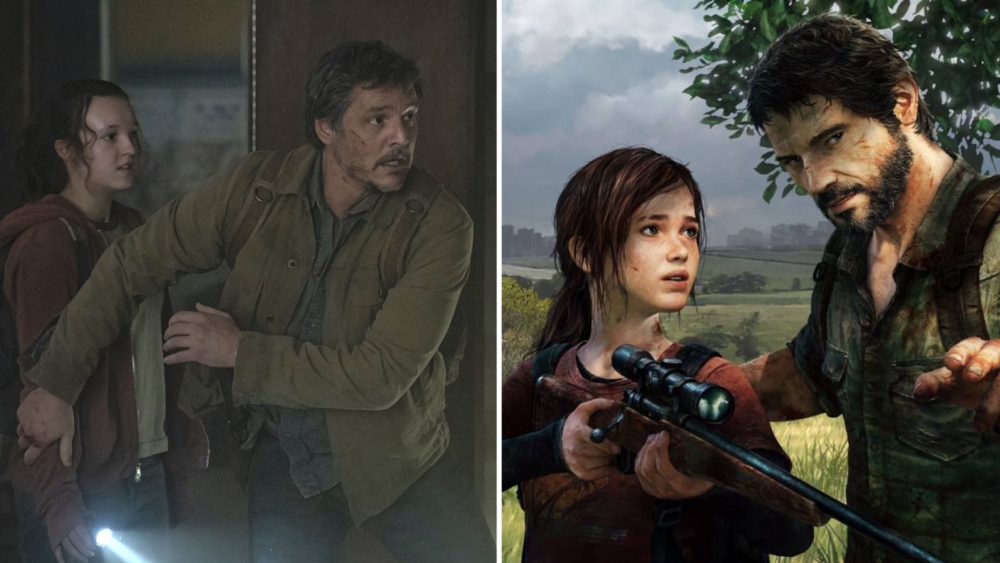In the 2013 Sony Playstation 3 video game “The Last of Us,” you play (mostly) as Joel, a hardhearted smuggler who must transport a teenage girl, Ellie, through a post-apocalyptic American landscape riddled with zombies — and worse. Players must guide Joel and Ellie as they navigate through dilapidated office buildings and snowed-in ski resorts, and then utilize whatever weapons they have on them to take out the swarms of zombies — or mercenaries, or cannibals — that could just as easily kill them.
So when the game’s creator, Neil Druckmann, collaborated with Emmy-winning “Chernobyl” creator Craig Mazin to adapt “The Last of Us” into a series for HBO, one may have expected them to spend a great deal of time figuring out how best to incorporate those visceral gameplay sequences into the show.
Instead, says Mazin, “We thought about definitely not doing that.”
Mazin is a regular gamer, and was a massive fan of “The Last of Us” when it was first released. But he understood innately that it would be a “mistake” to try to replicate the way the game is played on the show itself.
“It’s the mistake other people have made, I think, in adaptation [of video games], because they think that’s what connects people to a game,” Mazin says. “But ‘The Last of Us,’ more than any other video game I’ve ever played, connected me to character and relationship. And the relationship between Joel and Ellie was the thing that we wanted to pull through the most.”
Druckmann also sees a crucial distinction between the experience of actively playing a game — as well as controlling the virtual camera that is capturing all the action — versus passively watching Joel (Pedro Pascal) and Ellie (Bella Ramsey) in a scripted TV series.
“There’s different kinds of emotions you could draw from the player through an interactive space — where they swing the camera to, how they’re approaching the obstacle in front of them,” he says. “When you’re playing those sequences, that immersion really makes you connect with the player you’re controlling. Everything is only seen through their perspective. If we were to shoot those sequences as is, they would make for pretty boring action sequences. So one of the easiest decisions we made was like to say, ‘Let’s strip all those out. Let’s only have as much violence in this story as is required and no more.’ That allows the violence to have even more impact when you see it on screen than in the game.”
The series remains remarkably faithful to the story beats of the game, including some major action set pieces that will be familiar to anyone who has played it — like a scene in Episode 4 when Joel and Ellie are set upon by a squad of opportunistic raiders. But Mazin and Druckmann used those sequences to draw viewers deeper into the emotional arcs of the characters rather than the harrowing spectacle surrounding them.
“I want you to be with the characters. I want you to feel their relationship,” Mazin says. “That moment [in Episode 4] is really about Joel and Ellie. There are bullets that are whizzing over their head and slamming into the wall behind them. But it forces a moment to occur that changes who they are. That’s why I love those things.”
Druckmann also relished the opportunity to break away from the rigid mandate of the game to always remain in Joel’s perspective. He points to a scene in the series premiere between Ellie and Marlene (Merle Dandridge), the leader of a freedom fighter brigade called the Fireflies. In the game, Marlene only shows up “when Joel meets Marlene and no other time,” he says. “However, in the show, we were able to say oh, this moment that’s kind of hinted at, of what was it like when Ellie met Marlene for the first time, we get to dramatize that in the show.”

HBO
Even more provocatively, Druckmann says the show will also spend time with the (non-zombie) enemies that players must kill to advance in the game. “These characters that sometimes hunt you in the game, we get to humanize them in the show,” he says. “Because so much of the story is about perspective. No one feels like they’re the villain. They all feel like they’re doing what’s right for their group and their tribe.”
It’s part of what Mazin sees as the key opportunity of adaptation. “How can we bring in all of the elements of the world in such a way to force people into situations that reveal who they really are?” he says. “In doing that, all these other characters and their relationships started coming through.”
That freedom also allowed Mazin to broaden the scope of the series even further, including a prologue of a TV interview show from 1968 in which an epidemiologist explains how fungi could adapt to invade and control humans — something that regularly happens with insects today. Mazin says the scene came to him during production when he recalled something from his research into the catastrophic 1986 meltdown at the Chernobyl nuclear power plant that still haunts him today.
“That reactor had been there for years,” he says. “It could have blown up at any point. I thought it was a very scary notion to explain that we were aware of this problem for a long time. It had just been waiting — and then one day it happens. But it didn’t happen just because we decided to make a TV show. It’s been there forever, and then the inevitable finally occurred.”
It also seems inevitable that “The Last of Us” will extend beyond its first season, which covers the full storyline of the first game. “If people show up and they watch it, then yeah, we’re ready to do that,” says Mazin. Sony released “The Last of Us Part II” for Playstation 4 in 2020, which makes a sizable time jump and tells an even more sprawling story with several new characters, but Mazin is cagey about how future seasons of the series might unfold.
“It’s a big time jump,” he says of the game’s sequel. “But there’s a little bit of interesting flexibility. Wonderful things that makeup can do. We don’t get too wrapped up in that stuff. As long because people are absorbed by the story, I think there’s some flexibility there.”
He continues, “But certainly, there’s an enormous amount of story that Neil created that we would want to dive into. The second game is much bigger than the first one. So we were just starting now to talk about how to kind of break it into a season — seasons. How do we adapt? What do we keep? What do we change? How do we transform? What do we add? All those things we’re just starting to talk about now, even while I’m still finishing this season of ‘The Last of Us.’”
From Variety US


































